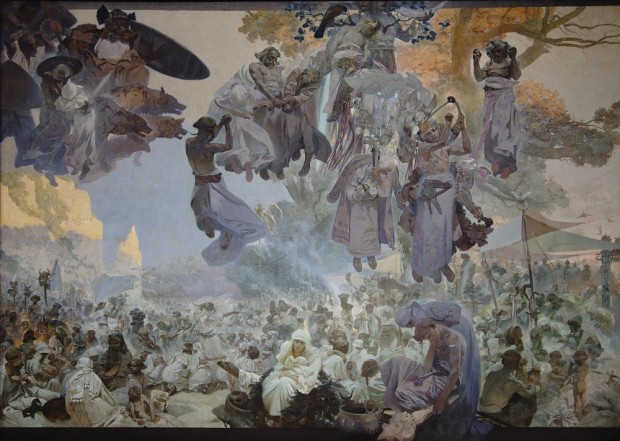'The Slav Epic' cycle No.2: The Celebration of Svantovít. When Gods Are at War, Salvation Is in the Arts (between the 8th and 10th centuries AD). (1912)
In the 8-10th centuries, the Slav people expanded westwards. In the city of Arcona on the island of Rujana (now Rügen, Germany) they built a temple dedicated to the Slavic pagan god Svantovít. Each autumn pilgrims from as far as Spain would travel to the temple to celebrate the annual harvest festival.
In 1168 the Danes attacked Rujana and destroyed the temple. As the Baltic region came under Germanic rule, Svantovít became a symbol of the former glory of the Baltic Slavs.
Rather than concentrating on the temple itself, Mucha chose to focus on the festive pilgrims dressed in white in the bottom third of the canvas. They appear oblivious of the gods above them who struggle with the oncoming enemy led by a pack of wolves. The ominous sky contrasts with the sun-filled scene below. A young mother holding her child in her arms looks out at the viewer in distress as though she alone is aware of the imminent demise of the city.



